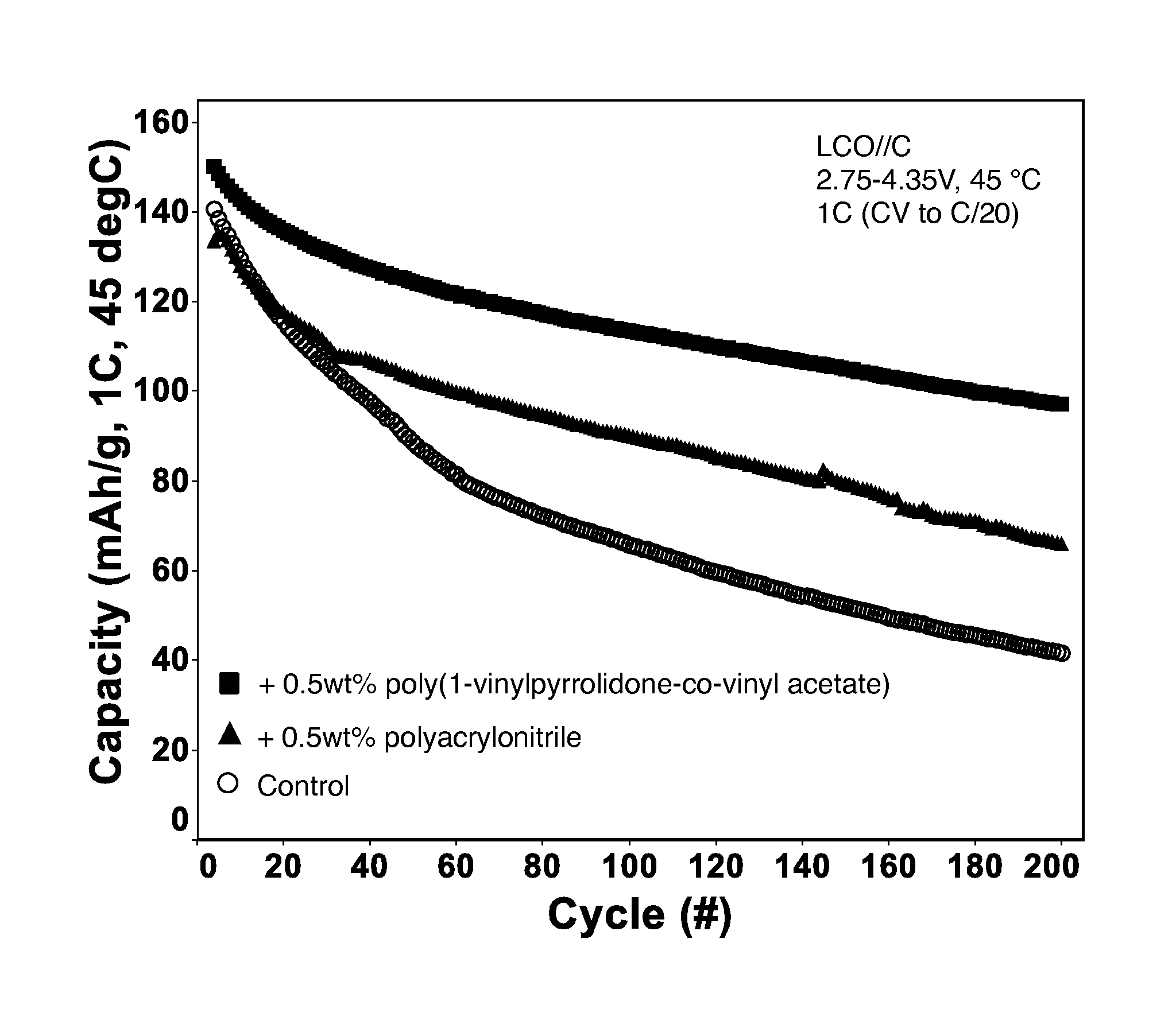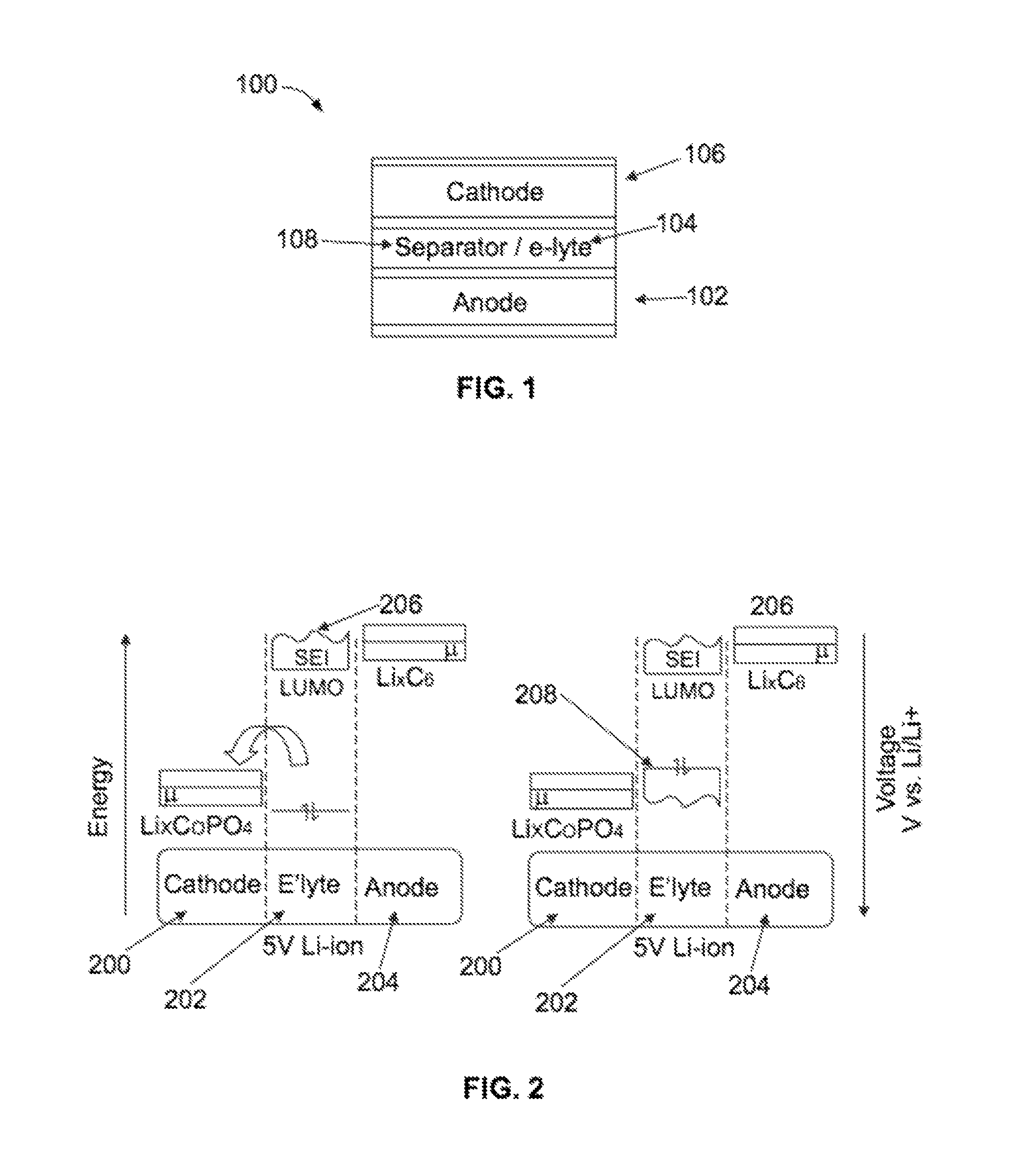Electrolyte solutions for high energy cathode materials and methods for use
a technology of high-energy cathode materials and additive compounds, applied in the field of batteries, can solve the problems of affecting the performance and safety of batteries, the improvement of cell performance using these materials is small, and the conventional electrolyte cannot be operated at high voltag
- Summary
- Abstract
- Description
- Claims
- Application Information
AI Technical Summary
Benefits of technology
Problems solved by technology
Method used
Image
Examples
examples
[0062]Battery cells were formed in a high purity Argon filled glove box (M-Braun, O2 and humidity content 2 cathode material was mixed with poly(vinylidene fluoride) (Sigma Aldrich) and carbon black (Super P Li, TIMCAL) with 1-methyl-2-pyrrolidinone (Sigma Aldrich) as solvent. The resulting slurry was deposited on an aluminum current collector and dried to form a composite cathode film. (ii) For the anode, a commercial graphitic carbon was mixed with poly(vinylidene fluoride) (Sigma Aldrich) and carbon black (Super P Li, TIMCAL) with 1-methyl-2-pyrrolidinone (Sigma Aldrich) as solvent. The resulting slurry was deposited on a copper current collector and dried to form a composite cathode film. Each battery cell included the composite cathode film, a polypropylene separator, and the composite anode film. A conventional electrolyte was mixed with a given electrolyte additive and added to the battery cell. The battery cell was sealed and pre-formed at 30 degrees C. and cycled between 2....
PUM
| Property | Measurement | Unit |
|---|---|---|
| charge voltage | aaaaa | aaaaa |
| charge voltage | aaaaa | aaaaa |
| charge voltage | aaaaa | aaaaa |
Abstract
Description
Claims
Application Information
 Login to View More
Login to View More - R&D
- Intellectual Property
- Life Sciences
- Materials
- Tech Scout
- Unparalleled Data Quality
- Higher Quality Content
- 60% Fewer Hallucinations
Browse by: Latest US Patents, China's latest patents, Technical Efficacy Thesaurus, Application Domain, Technology Topic, Popular Technical Reports.
© 2025 PatSnap. All rights reserved.Legal|Privacy policy|Modern Slavery Act Transparency Statement|Sitemap|About US| Contact US: help@patsnap.com



